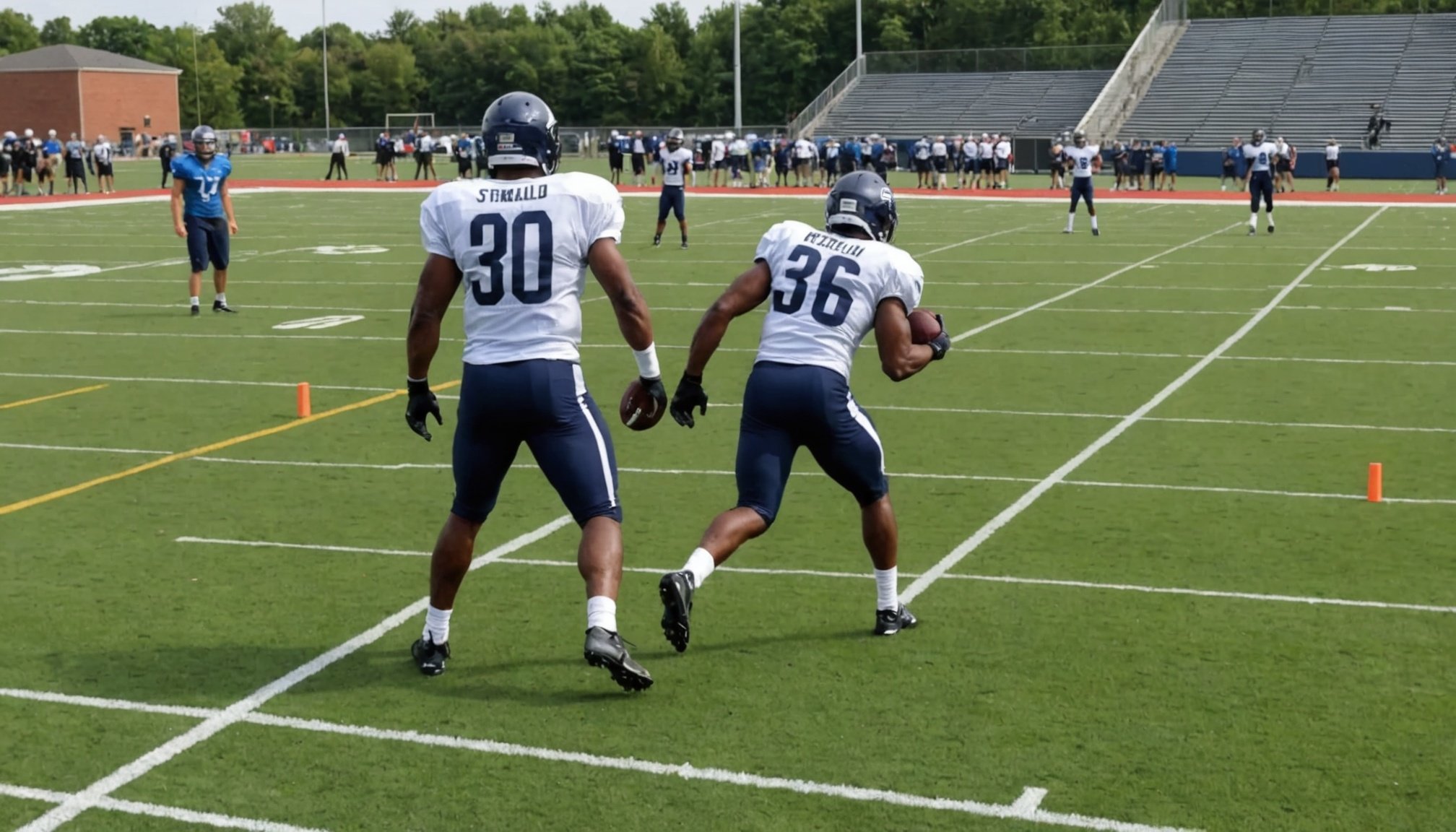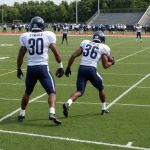Understanding Field Vision in Football
Field vision in football refers to a player’s ability to perceive and interpret game situations by observing all key elements on the field. This essential skill is crucial for decision-making, as it enables players to anticipate opponents’ moves and identify opportunities to advance the ball efficiently.
Enhancing player awareness involves recognizing patterns in both teammates’ and opponents’ movements. This often presents challenges for players, especially in dynamic game situations. For instance, maintaining situational awareness under pressure is demanding, but it’s critical for effective gameplay.
Also read : Unlock exciting rewards with the monopoly casino promo code
Football training programs incorporate drills that improve field vision by simulating real-game scenarios. Such exercises condition players to process information quickly and make accurate decisions. Improved field vision not only bolsters decision-making but also heightens a player’s ability to execute strategic plays, adapt to evolving situations, and contribute to the team’s success.
Ultimately, the development of field vision creates a more cohesive team dynamic, as well-aware players can better predict and complement their teammates’ actions. The ability to maintain high levels of awareness and adaptability can indeed transform the outcome of a match by opening up new tactical possibilities.
Also to see : Essential Legal Safeguards for UK Football Players During Contract Negotiations
Essential Training Drills for Enhancing Field Vision
To enhance field vision in football, players must incorporate specific training drills that target various skills. This section explores three crucial drills for boosting field awareness and overall game performance.
Drill 1: Peripheral Vision Exercises
Peripheral vision is vital for players to spot teammates and opponents at the edges of their visual field. Exercises such as using coloured cones placed at varying angles or passing drills with multiple players improve peripheral awareness. These can be easily integrated into warm-ups. Coaches should encourage players to maintain awareness of their surroundings without needing to look directly at their target, honing the ability to react promptly during a match.
Drill 2: Simulated Game Scenarios
Simulated game scenarios mimic the pressure of competitive play. Activities like small-sided games or specific match situations promote adaptability and quick thinking. Players face dynamic environments, helping them learn to anticipate opponents’ moves. Experts suggest addressing common mistakes, such as positioning errors, by providing immediate feedback and repeating scenarios to reinforce corrective actions.
Drill 3: Visual Processing Activities
Enhancing cognitive processing speed is key in competitive sports. Drills such as rapid-fire passing sequences or technology-assisted tasks improve quick decision-making. Incorporating visual aids like reaction balls or light cues challenges players to process information swiftly. Quick visual processing is crucial in maintaining the flow of the game and outsmarting opponents.
Incorporating Visual Learning in Football Training
In the dynamic world of football, visual learning plays a pivotal role in enhancing players’ skills by coupling imagery with physical exercises. Coaches employ innovative coaching techniques to help athletes cognitively develop, creating an engaging training experience that maximises learning potential.
One effective strategy involves utilising videos of matches to break down play styles and tactics. Players can cognitively develop by observing and then implementing these strategies in real-time scenarios. This technique not only reinforces learning but also accelerates decision-making and spatial awareness on the field.
Furthermore, integrating visual stimuli with drills provides deeper retention of skills. For instance, players often use diagrams to understand complex formations, quickly translating them into physical actions. This combination supports cognitive development, honing both analytical and practical abilities simultaneously.
Renowned coaches worldwide emphasise the importance of visual learning, citing improved performance metrics. Clubs like Barcelona and Manchester City have successfully adopted visual techniques, leading to enhanced gameplay and tactical understanding among players. These real-world cases highlight how visual learning serves as an indispensable tool in modern football coaching, ultimately producing more skilled and adaptable athletes.
The Role of Feedback in Training
Feedback is pivotal in enhancing the effectiveness of training and refining coaching methods. It serves as the backbone for improving athletic performance and skill acquisition.
Importance of Immediate Feedback
Immediate feedback is crucial for delivering real-time corrections during drills. It allows athletes to adjust their actions promptly, fostering quicker improvement. Techniques such as verbal cues combined with physical demonstrations can significantly enhance learning. Reviewing performance right after a drill is completed helps understand what went well and what needs improvement. This kind of instant insight prevents the reinforcement of mistakes and supports optimal training outcomes.
Utilizing Video Analysis
Video analysis offers a comprehensive method for evaluating players’ field vision. By recording and reviewing gameplay, coaches and players can identify strengths and weaknesses with clarity. Implementing video analysis involves setting up cameras during training, analysing footage with players, and helping them visualise their movements. The benefits are notable, as players gain a deeper understanding of their spatial awareness and strategic thinking on the field.
Incorporating Peer Reviews
Peer feedback serves as a valuable tool in skill development. It encourages players to view their performance from multiple perspectives. Creating an environment where constructive peer reviews are encouraged can lead to significant growth. Testimonials from players who have engaged in peer feedback highlight improvements in communication skills and teamwork. This method fosters mutual respect and continuous learning among athletes.
Expert Insights on Field Vision
Understanding the importance of field vision in football is critical. Through expert tips and coaching insights, we can explore how to enhance this essential skill. For any player, developing situational awareness is fundamental to becoming effective on the pitch.
Experienced Coaches’ Perspectives
Many football coaches emphasize the value of anticipation – the ability to predict an opponent’s moves. This skill often stems from rigorous practice sessions focusing on predicting play patterns. It is not just about seeing the ball, but also about discerning the movement and positioning of teammates and opponents alike. Experienced coaches employ drills that stress quick, decisive thinking to simulate real-game scenarios.
Overlooked Aspects of Training
Commonly ignored in player development is the integration of cognitive exercises. These exercises enhance decision-making speed and accuracy under pressure. Additionally, the importance of communication during play is often understated—clear and effective communication can significantly amplify field vision by expanding players’ awareness beyond their line of sight.
Future Trends
Emerging trends in training emphasize the use of data analytics to further player comprehension. By analyzing vast amounts of player movement data, coaches can tailor strategies that enhance individual and team performance. The integration of technology, such as virtual reality, is also expected to revolutionise training methods, providing players with immersive environments to refine their situational awareness.











